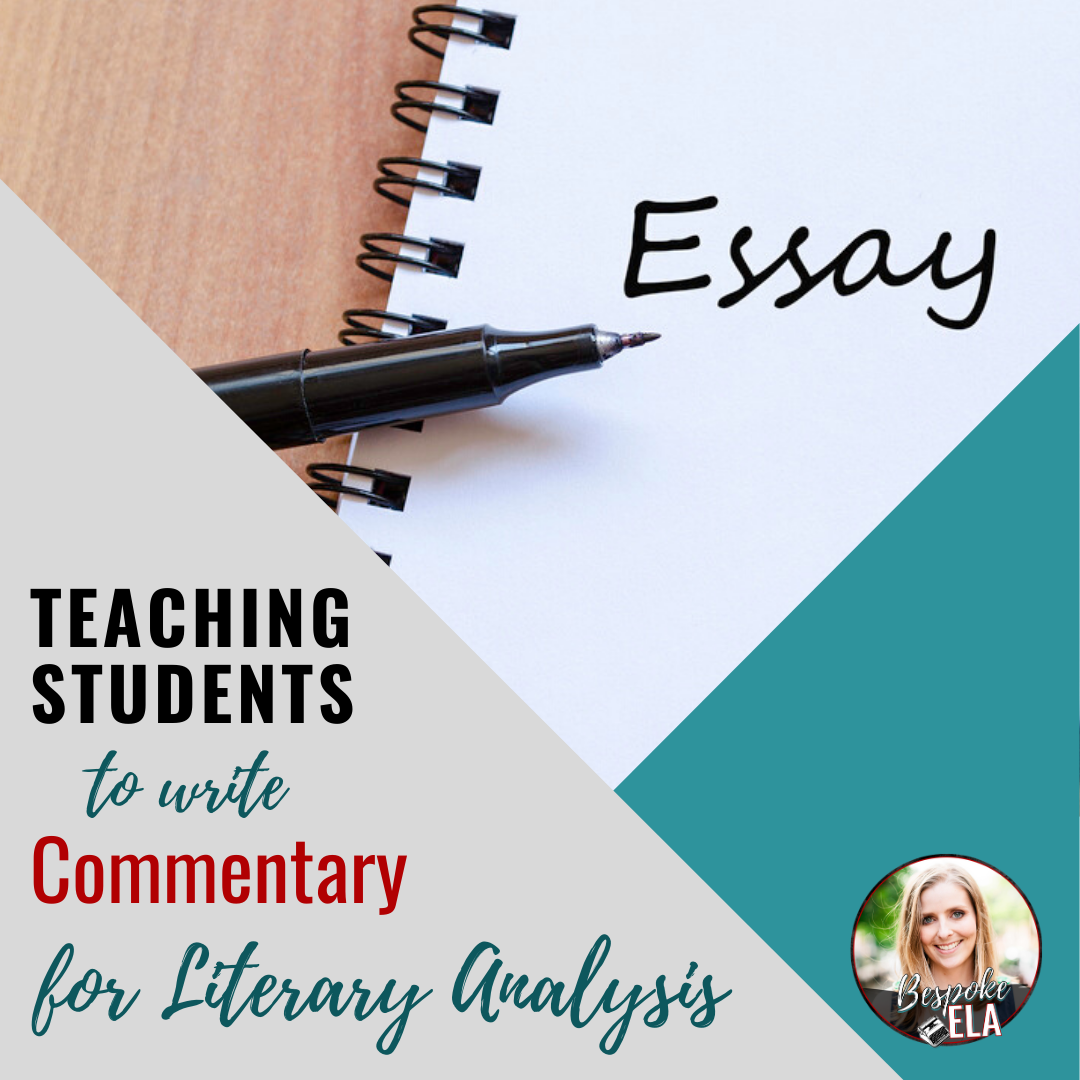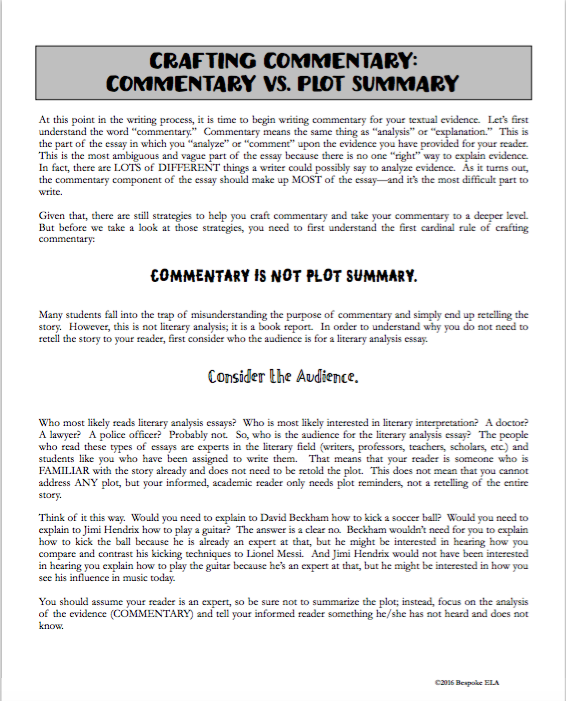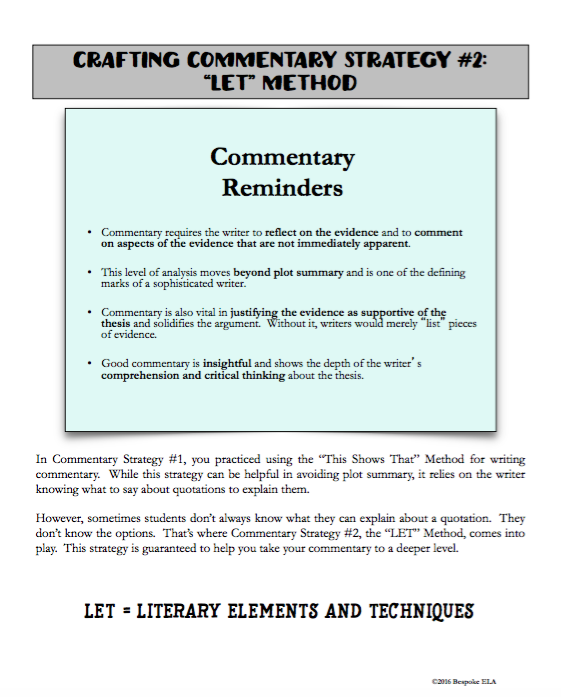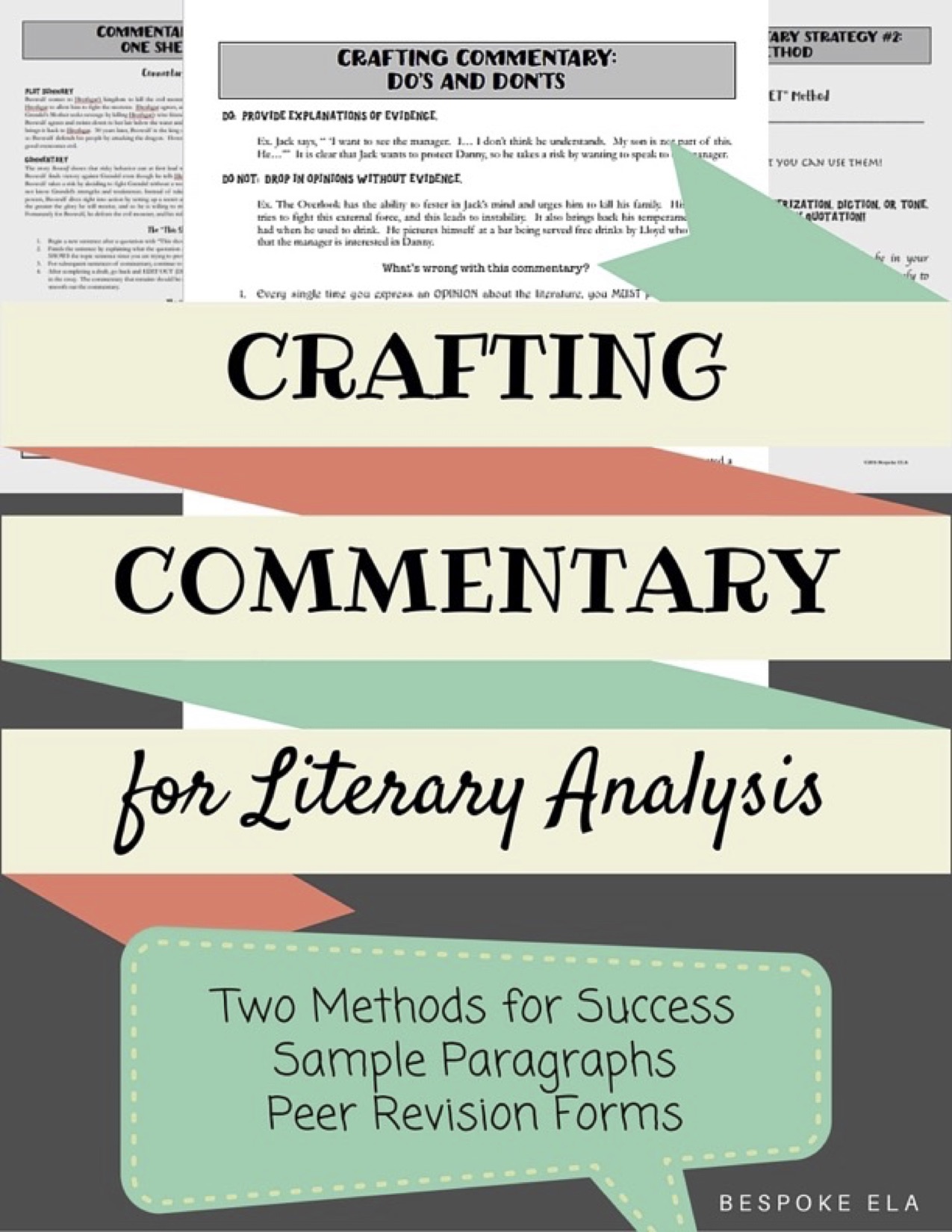Writing commentary is undoubtedly the most difficult part of writing any essay. All other parts of the essay are more formulaic in nature. There are standard rules for how to write a thesis statement, a topic sentence, a blended quotation, etc. But when it comes to commenting on evidence, there isn’t one set way to do it. In fact, there are many, many comments one can make about a piece of evidence, and no two people will explain the same piece of evidence in the exact same way. Likewise, the exact same piece of evidence can be used to prove two disparate arguments. Nothing shows this is true more than the literary analysis essay.
If you were to give your students the exact same thesis statements and quotations to use for an essay, you would be amazed at how different the essays would actually turn out! How can this be? This occurs because the writer’s voice comes through the commentary. It is within the commentary that students share their original thoughts and unique insights about a piece of literature. This presents a challenge for students who are often left asking what to write, and it can be tricky to teach students how to write commentary without putting words in their mouths.
As an English teacher, I have focused on teaching my students how to craft their writing into powerful essays. And I have worked to develop strategies for enabling students to avoid plot summary while taking their commentary to a deeper, more meaningful level. I have developed two key strategies for enabling students to expand their commentary and explain their textual evidence in a way that will help them write with more confidence.
One of these methods is more commonly known. It is called the “This Shows That” Method in which students begin their commentary sentences with the words “this shows that,” which forces them to explain what a quotation shows while simultaneously helping them to avoid the trap of writing plot summary. Students often think they’ve written commentary when, in fact, they’ve only written a plot summary. How does this happen? In my mini-lesson, I give examples of how and where students can go wrong. A paragraph with textual evidence can still be merely plot summary, and it’s important to show students examples of this trap so that they can avoid it in their writing.
While the “This Shows That” Method for writing commentary is an excellent tool for avoiding plot summary, it still relies upon students knowing how to explain the evidence. In this way, the “This Shows That” Method is limited, so I have developed a secondary method called the “LET” Method for writing commentary. This method helps guide students by giving them options for what to write about in their commentary sentences. Essentially, “LET” stands for “Literary Elements and Techniques,” and the mini-lesson takes students step-by-step through writing commentary based upon literary devices. When students are able to recognize that every single quotation contains hidden messages about theme and that those messages come through literary devices, they are able to find the pathway to writing effective commentary.
To find out more about the LET Method for crafting literary analysis, check out the Crafting Commentary Product by Bespoke ELA.
Students need to understand that the entire purpose for identifying literary devices in pieces of literature is essentially to identify evidence for literary interpretation. Therefore, literary elements and techniques should not be taught in isolation; they should be connected to writing because these are the tools a writer uses to communicate a message. It is the job of an author to construct a message by using literary devices and the job of the essayist to deconstruct the parts to discover that message. When students learn to identify devices for the purpose of literary analysis, crafting commentary becomes easier.
What methods have you tried for teaching students how to write commentary? What has worked? What hasn’t worked? Do you find that students struggle the most with the commentary part of the literary analysis essay? Leave us a comment!
About the Author
Meredith is the founder and creator of TeachWriting.org and Bespoke ELA. She has taught high school English for 10+ years in Dallas, Chicago, and New York City and holds a M.A. in Literature from Northwestern University. She has always had a connection to the written word-- through songwriting, screenplay writing, and essay writing-- and she enjoys the process of teaching students how to express their ideas. Meredith enjoys life with her husband, daughter, and sweet pups.






